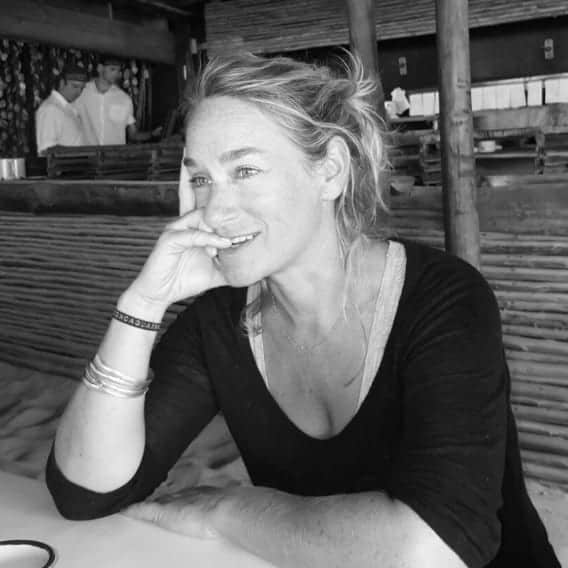
Dr. Cathleen King, founder of Primal Trust™, is a holistic somatic physical therapist and expert in chronic illness, trauma healing, and nervous system regulation. With doctoral-level training and years of personal experience overcoming debilitating illness, Dr. King has dedicated her life to empowering others to self-heal through transformative practices. Primal Trust™ fosters a global community focused on nervous system regulation, trauma healing, and rediscovering innate safety, helping individuals achieve profound wellness and lasting recovery. MysticMag offers you an exclusive interview.
Can you explain how your personal journey influenced the development of the Primal Trust™ Method, and what were some pivotal moments in its creation?
My personal journey of all of the different types of tools that I tried to help with my own nervous system, and trial of both success and failures of using different tools was really what caused me to realize that we needed a nervous system program with many different tools, but yet using the tools in a proper sequence so that the nervous system wasn’t overwhelmed. Because I found that as I went through different protocols and tried different tools or worked with different therapists, that sometimes the tools would be helpful and sometimes it would cause too much emotional flooding, meaning it was too much for my nervous system too soon. And I also noticed that a lot of people were using tools such as brain retraining, but they had a lot of resistance to using brain retraining, because that’s often about being positive and doing creative visualization, and their nervous system just wasn’t ready to take that type of stance when they were suffering so much. And so I realized that there needs to be different tools for different people at different stages. And a lot of the different programs at the time were just focusing on one tool, such as focusing on brain retraining alone, or focusing on somatic movement alone, or focusing on vagus nerve toning alone, or focusing on trauma healing and attachment repair. But there was no program at the time that was actually weaving all of these different aspects of nervous system regulation together, and for me, that was a huge missing link. And maybe it’s because I have this background as a physical therapist, and I realize that when you’re actually rehabbing a part of your body, that you’re often working on other parts of the body. At the same time, I saw the same thing for the brain and the nervous system, that it needed to be a multi disciplinary approach with various tools and also carefully sequenced in order to not overwhelm and over time, I realized which tools actually helped me in a particular sequence, to not only regulate my nervous system, but to help to process and discharge trauma, and so that was how I began creating this platform, which is not just a course, it’s a sequenced tool kit, it’s a journey, it’s a process. And part of teaching people how to heal is to give them realistic expectations. I noticed a lot of people would give these promises like in 28 days, you can reset your nervous system and heal. And that’s usually not how it goes with people. It’s usually much more of a process and a longer journey. And so I also found that with the primal trust platform, I needed to teach people a little bit more about the psycho, neuro immunology of chronic illness, and the truth about how the process of healing happens with the body. And that just because you learn a nervous system tool doesn’t mean that your symptoms will go away right away, or if your symptoms don’t go away right away, it doesn’t mean that the nervous system tool isn’t working, it just might take time. So over time, I launched my primal trust membership, and in fact, I’ve actually created several iterations of both my level one and level two program over the last four years, because I keep learning and I keep growing, and I keep learning from my members of what works and what doesn’t. And I’m somebody who when I find things that don’t work, or I find ways to do things better, I’m willing to change it and to adapt and to modify and to always be learning. And I think that’s what actually sets the primal trust method apart is that it’s an ever growing, ever expanding process. It’s actually in a live course, meaning it wasn’t just a one and done course. I am constantly improving it, and I’m actually planning on redoing my level two process all over again, based on the things I’ve learned the last few years. I also realized that there was a huge need for community when it comes to healing, and that just doing a course on your own, while it can be helpful, sometimes it’s even more helpful to have other peers that have similar conditions to learn alongside you, so that you feel more understood. And so I also created a process where people feel in community, and they get involved in study groups, and they work together and teach each other throughout the process, rather than just having them listen to the course at home. And that’s been a huge part of the success of Primal Trust™.
The Primal Trust™ approach integrates trauma healing with nervous system regulation. How does this method differ from other trauma-healing models?
So, like I said, the sequence of which tool to use when matters, and the mistake I made was that I tried to do trauma healing before I had even basic nervous system regulation skills in my nervous system. And so when I went to a trauma therapist, it was disastrous, because when I left that therapy session and I went home, I was emotionally flooded, and I didn’t have the skill set to handle everything that would come up during the week in between therapy sessions, and for that reason, I put a pause on doing my trauma healing until after I had gotten basic nervous system skills practice. So what I think differs is that even if somebody has trauma, I don’t go into that right away. We stay out of that, until I know that they have developed a skill set of vagus nerve toning, brain retraining, basic somatic practices.
Could you share insights into how neuroplasticity plays a role in Primal Trust™ and why it’s a central focus in your healing framework?
Neuroplasticity is all about how the brain changes itself. And the reason why this is a central focus is because I believe that chronic illness is a chronic dysregulation of the autonomic nervous system and the signaling from the brain to the body. And so eventually it made sense to me that all infection, all detoxification issues, stomach issues, autoimmune issues, were actually regulated by the biochemistry produced in the brain. And so if I could change the way that the brain created the biochemistry of the body, it would make sense that the body would start to heal itself. And there’s a lot of research to show this, and a lot of programs, even before the creation of primal trust, that were demonstrating this truth about neuroplasticity. And so for me, the big turning point after many, many years of chronic illness was limbic system rewiring, or self directed neuroplasticity. Now sometimes people can’t jump right into hardcore neuroplasticity exercises because they’re maybe dealing with so much emotional stress or or cognitive difficulties, and so we actually don’t go into neuroplasticity in an intense way right away. We do this after we’ve done some vagus nerve toning, just to prepare the body to learn how to feel safe, to feel safe, because a lot of times, the brain doesn’t like the feeling of calming down, because it actually feels more unsafe. To feel safe, it feels vulnerable. And so we have to slowly sneak up on the brain, on the amygdala, on the limbic system, and teach it that actually being calm and at ease is an ideal state of being okay.
How do practices like embodiment and mindfulness contribute to healing in Primal Trust™, and what outcomes have you observed?
Just like neuroplasticity is really helpful in helping the body heal the other devils, the other side of the coin, sorry, is that some people will use neuroplasticity to dissociate from their reality, and they are not able to process their emotions. They’re able to be visualized and create joy, but when really hard things happen, they’re not able to feel the feelings and to deeply feel their intuition or their boundaries, and so embodiment practices are an important part of reconnecting The brain to the body and regulating your digestion and endocrine system, as well as establishing your sense of self, your sense of truth, your sense of integrity and authenticity. And so at the right time, we introduced a lot of embodiment practices, different somatic movement practices, somatic awareness and somatic awareness practices. And what I have observed is that when people get to a certain point of their healing using brain retraining or neuroplasticity exercises alone, they often hit a threshold where they can’t heal anymore, until they add in embodiment practices. And for that reason, we often add in somatic practices after we have taught somebody brain retraining.
For those new to somatic healing, what practical steps do you recommend to start reconnecting with their bodies and nervous systems?
We often teach people what is often known as the orienting response, which was really widely taught by the somatic experiencing practitioner Peter Levine. The orienting response is the ability to notice where your body is in space. It’s also the ability to notice what’s happening inside your body. And a lot of times we are so distracted up in our thinking mind, but we’re actually not even aware of the present moment. And so the mind might be ruminating about stressful potential future realities or upsetting past realities, while completely missing out on the fact that in the present moment everything is okay. And so you start to learn how to orient to the present moment, and that helps the body to, in some ways, land in the present moment and to calm down and to be able to feel more at ease. It’s a way of sending signals of safety to the brain. So I first of all recommend that you just take a moment to look around your environment and notice the beauty that’s around you, notice where you’re at, notice your feet on the floor, your bottom in the chair. And that would be called Environmental orienting. And then taking that a step further, of closing your eyes and just simply noticing the body as it is, all of the weird sensations you have, all of the emotions that might be in there, and not resisting them, just letting them be there like a witness, and just observing the state of your body, becoming more of a curious observer and observing your body from a higher mind. And as simple as these practices are, if you do them throughout the day, they’re incredibly regulating. The other practical step I’d recommend for somatic healing is to take slow walks in nature and to truly notice, moment by moment, step by step, your body, as it’s walking, and the environment around you, that also will help with nervous system regulation in a profound way.
If you would like to find out more about Primal Trust, please visit https://www.primaltrust.org/



